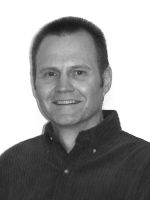The American Ceramic Society announces ICB Project Leader Frank Zok among 2014 Class of Fellows

The American Ceramic Society (ACerS) announces ICB project leader Frank Zok as one of 17 members that will be elevated to Fellow status. The Fellow designation recognizes ACerS members who have distinguished themselves through outstanding contributions to the ceramic arts or sciences, broad and productive scholarship in ceramic science and technology, conspicuous achievement in ceramic industry, or by outstanding service to the Society.
The 2014 Class of Fellows comes from an international cross-section of leaders in academia, research labs, industry and government.
Frank Zok is Professor of Materials at the University of California, Santa Barbara. He also serves as co-leader of the ICB Cellular Structural Materials Task Order, is Director of the Pratt & Whitney Center of Excellence in Composites at UCSB, and has been Associate Editor of the Journal of the American Ceramic Society for over twenty years.
Zok earned B.E.Sc. and M.E.Sc. degrees from the University of Western Ontario and his PhD from McMaster University, Canada, all in Materials Engineering. His research over the past twenty years has addressed issues in mechanical and thermal properties of multiphase materials and structures, including ceramic matrix composites, armor ceramics and cermets, mineralized biomaterials, lattices, and various polymer- and metal-matrix composites.
Zok has contributed to five book chapters and co-authored 160 scientific publications, including 38 that appeared in the Journal of the American Ceramic Society. Among the latter, the last two have been highlighted as Editor’s Featured Articles. Zok also led the UCSB team that won the 2010 DARPA-sponsored $50,000 challenge on Digital Manufacturing Analysis, Correlation and Estimation (among over 50 teams from 13 countries worldwide).
Founded in 1898, The American Ceramic Society is the leading professional membership organization for ceramic and materials scientists, engineers, researchers, manufacturers, plant personnel, educators, and students. The Society serves more than 9,000 members from more than 70 countries.
